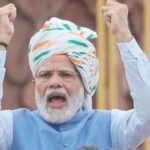 Moon Desk: On October 27, 1947, a dark chapter unfolded in the history of Jammu and Kashmir. This day, known as Black Day, marked India’s forcible occupation of the region against the will of its people. The dream of self-determination for Kashmiris was shattered, leaving behind a legacy of pain that still haunts us today.
Moon Desk: On October 27, 1947, a dark chapter unfolded in the history of Jammu and Kashmir. This day, known as Black Day, marked India’s forcible occupation of the region against the will of its people. The dream of self-determination for Kashmiris was shattered, leaving behind a legacy of pain that still haunts us today.
Kashmir, a land of profound beauty and rich culture, was meant to be a natural part of Pakistan based on religious, geographical, and cultural affinities. However, the controversial accession of Jammu and Kashmir to India by its Hindu ruler, Maharaja Hari Singh, laid the foundation of the Kashmir dispute. To this day, there is debate over the existence of the Instrument of Accession, a document that was supposedly the basis for this annexation. The uncertainty surrounding this document has cast doubt on the legality of India’s claim to the region.
In the aftermath of this contentious accession, the people of Jammu and Kashmir bore the brunt of India’s military might. The Jammu region witnessed a horrific annihilation, with over three hundred thousand Kashmiri Muslims losing their lives in just two months. This bloodshed was part of a disturbing plan to alter the demographic composition of the region.
Despite the immense suffering and tragedy, Kashmiris never surrendered their right to freedom. They resisted India’s illegal occupation from the very beginning, eventually leading to India approaching the United Nations in 1948 for help in settling the Kashmir dispute. The UN Security Council passed resolutions that invalidated India’s occupation and called for a plebiscite in Jammu and Kashmir, allowing its people to determine their fate.
Over the years, Kashmiris strengthened their struggle for self-determination, with mass uprisings becoming a symbol of their resilience. The years 2008, 2009, 2010, and 2016 witnessed massive protests, with millions taking to the streets of Srinagar, demanding their right to decide their destiny. Tragically, India responded with brutal force, using bullets, pellets, and tear gas, resulting in the deaths of hundreds and injuries to thousands.
Indian state terrorism in Jammu and Kashmir has left an indelible scar on the region’s people. The numbers speak for themselves: over 96,000 Kashmiris martyred, 22,963 women widowed, 107,914 children orphaned, and 11,259 Kashmiri women subjected to molestation or gang-rape. Thousands of youth have disappeared in custody, and the discovery of mass graves raises alarming questions about their fate.
Since the 2016 uprising following the extrajudicial killing of Burhan Wani, more than 1500 Kashmiris have been killed, and over 30,000 people have been injured by Indian forces’ bullets, pellets, and tear gas shells. The pellet victims, among whom 2,000 have lost their eyesight, serve as a grim reminder of the relentless brutality.





